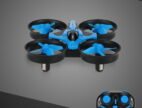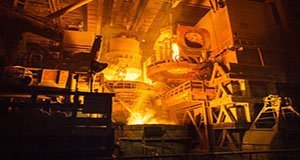3-D Printing Advances That Are Helping Small Businesses Grow Their Profits
by Abdul Aziz Mondal Small Business Published on: 31 July 2017 Last Updated on: 14 May 2025

This July, 3-D printing startup Desktop Metal, Inc. was named one of the 50 Smartest Companies by MIT Tech Review. In September 2017, the company will be launching a $120,000 office printer small enough to sit on a desktop that design teams can use to rapid prototype metal parts, and it plans to roll out a $420,000 full production system for mass-producing metal parts in 2018. Desktop Metal raised $97 million in the capital for its venture before launching, indicating investor confidence in the marketability of its products.
Desktop Metal’s promising start illustrates how 3-D printing technology advances are helping give small businesses momentum. Here’s a look at three other developments in 3-D printing that are helping small businesses grow their profits.
Making Prototyping More Cost-Efficient
Three-dimensional printing innovation has been driven by demand for prototyping applications of the technology. The additive nature of 3-D printing makes it less wasteful and more cost-efficient than traditional subtractive processes. For instance, using subtractive methods to make an aluminum part leaves about 60 to 70 percent of the material left over as scrap. Using additive methods minimizes this waste, significantly cutting costs.
Japanese footwear manufacturer AKAISHI tested traditional prototyping methods against prototyping using fused-deposition modeling (FDM) 3-D printing. The results showed that using FDM cut costs by 73 percent while cutting prototyping time from 10 days to 1 day, a 90 percent improvement.
Companies that haven’t invested in their own 3-D printers can still enjoy these types of savings by outsourcing. For instance, o-ring supplier Apple Rubber 3-D printing to offer its clients a catalog of over 7,000 o-ring sizes that can be used for customized prototype designs.
Expanding Mass Production Capability
Apple Rubber also offers mass production services, another area where innovations have been helping small businesses. While the value of 3-D printing for prototyping is widely recognized, its application to mass production has been held back by limitations in the technology. But much research and development have gone toward overcoming these limitations, and the fruits of this research are starting to flower. Rich Stump, the cofounder of 3-D printing innovator FATHOM, says that at one time, his company would switch from 3-D printing to injection molding once an order passed 300 to 400 parts. Now, he says, the Stratasys Continuous Build 3-D Demonstrator has pushed that number up to 1,500 to 2,000 parts.
Developed in partnership with Desktop Metal, the Demonstrator stacks three scalable, fused-deposition modeling printers on top of each other. The three printers print continuously using a plastic film situated atop the print bed. After a part has finished printing, the film slides it out of the printer. It is then cut, covering the print bed with a fresh sheet, and the completed part drops into a bin. This allows 1,500 parts to be produced per day. Production can be scaled up by simply adding more stacks. Multiple print jobs can be printed in parallel.
Meanwhile, FormLabs has developed a stereolithography printing method that can turn out as many as 11,000 parts while yielding a return on investment. Companies such as Ford, Boeing, and Sikorsky are already using 3-D printing for mass production. As this trend towards mass production increases, small businesses are increasingly gaining the capacity to produce economically at scale using 3-D printing.
Making Mass Customization Possible
A powerful marketing advantage 3-D-printed mass production is giving small businesses is the ability to use mass customization to offer personalized products. Mass customization with 3-D printing was pioneered by large companies such as Nike, which uses its website to allow customers to choose customized digital design options that are then produced with 3-D printing. More recently, smaller companies have been able to use the same strategy to offer personalized selections.
One small business segment tapping into this potential is toy manufacturing. 3-D-printed toys have caught on among hobbyists and parents due to their cost-saving potential. A Michigan Technological University study found that 3-D-printed toys can be produced 40 to 90 percent more cheaply than buying similar designs at retail. Digital Forming gives an example of a small business owner named Sandra who is putting 3-D printing to use by offering mass customized rubber ducks to customers. Her production process previously involved laborious whittling, creating a backlog of orders. With 3-D printing, she can fulfill orders far more rapidly, multiplying her sales.
Read More:



































































































